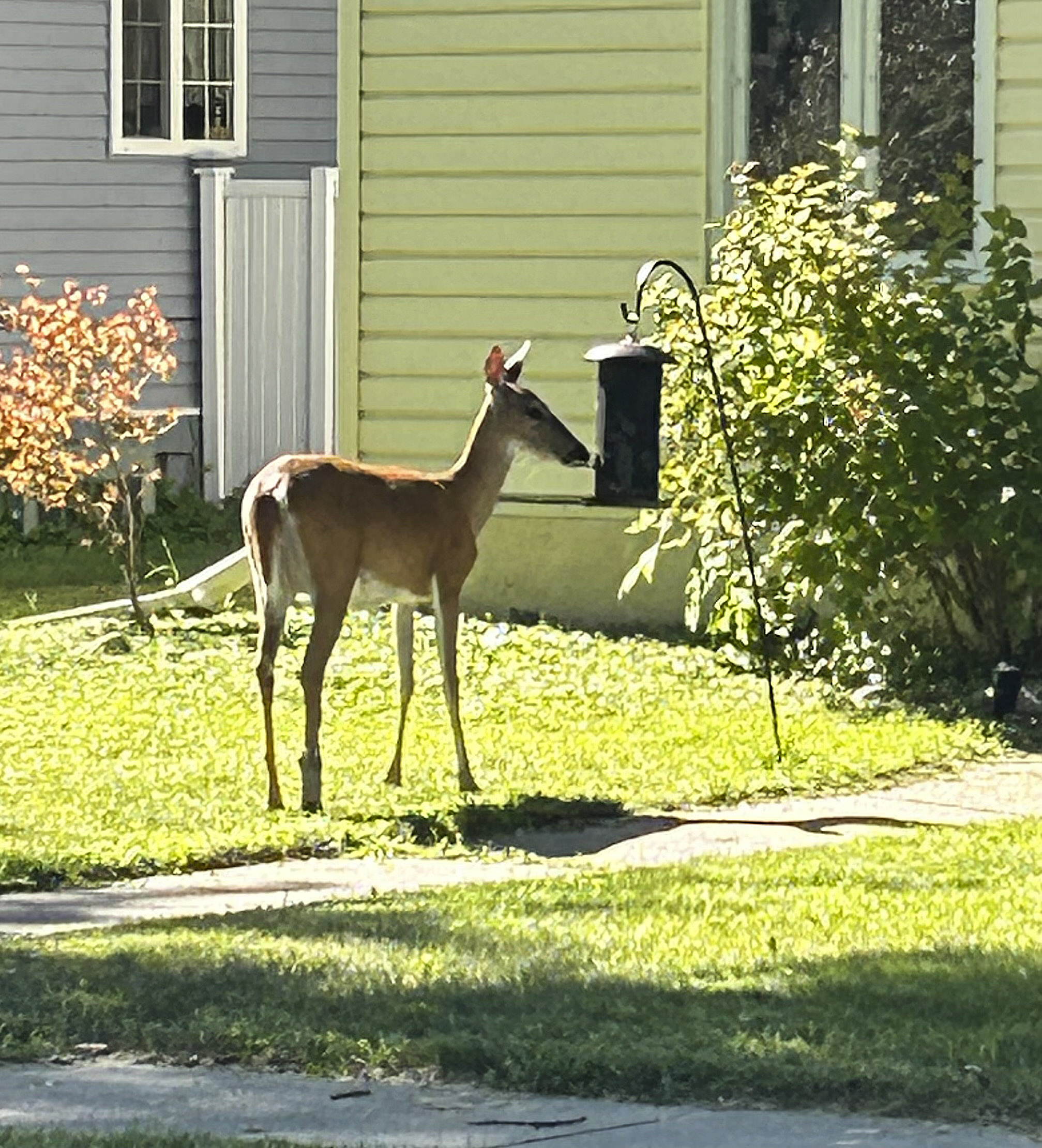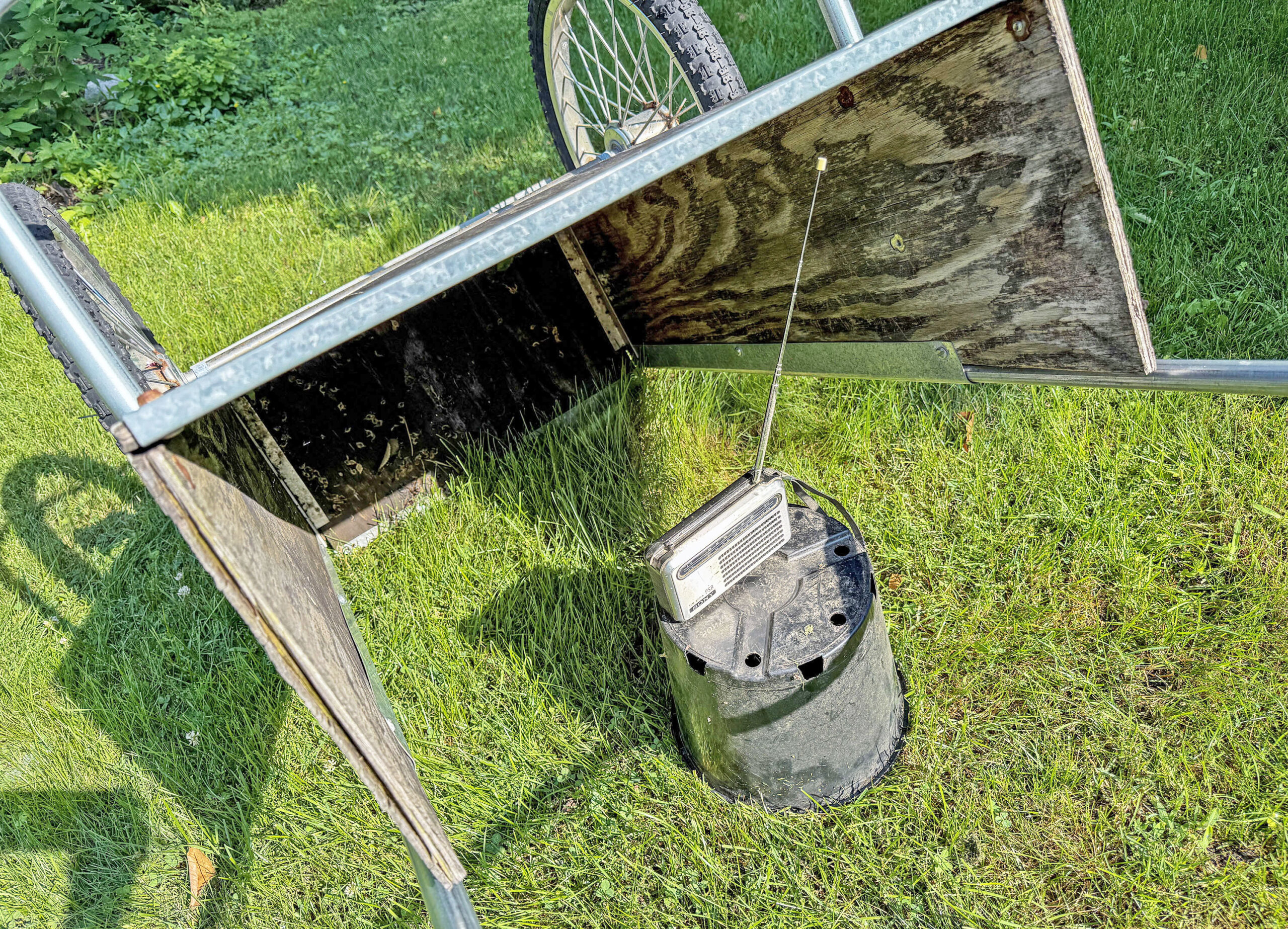
We often think of deer as a rural gardener’s problem, but they’ll sometimes venture right into town, like this cheeky explorer in south Moorhead. (Photo/ Brian Arett.)
Accidental Gardener
Ross Collins, the accidental gardener
It’s easy for most of us to get to the yard work in the spring. A splash of warm sunshine, finally! Morning dew! Peeping crocus! Happy little weeds!
Okay, maybe you have the last one because you didn’t knuckle down in the fall. Who likes to hit the fall garden chores? It’s glum outside, dry or clammy, weedy because we gave up on Independence Day. Nevertheless, fall is full of tasks before freeze-up: take in house plants, plant spring bulbs, add compost, divide perennials, dig and store tender bulbs, Watch out for thrips on the gladiolus. Inspect the house plants for spider mites. Keep the lawn mowed, and “remove all weeds, especially those that are setting seed.” ALL weeds? Easy for Mom to say. This list is from my mother writing in fall 1994.
Or earthworms! If you’ve had the house plants sitting on the ground, give them a heavy watering, let them sit for 10 minutes, upend the pot and examine the soil ball. “You may also—ugh—have slugs in the pots. They will be found on the bottom or sides of the pot.” Chewed foliage gives you a clue, Dorothy suggested.
But why do we have to do all this work? Can’t the fall finally be the time for a calming herbal tea, watching the delicate ochre of a halcyon harvest moon shine on?
No, because: pests. Some pests thrive on fall neglect. For example, cutting peony tops lowers risk of blight, “since the organisms that cause it live over winter around the tops.” The weeds, of course, well, the war never ends, but if we control in the fall we at least win a minor battle. And cut back iris and hostas, as the pest this time spoils spring happiness—those slimy overwintered leaves to clean up.
But fall pests don’t fall to only to the bugs. The rabbits—well, by now they’ve destroyed what they want. But the deer. That’s another topic, and my mother covered it.
“As beautiful as deer are,” she wrote, “nobody likes to have them nibbling plants in the garden. I am told they can devour plants practically overnight.”
Dorothy ran through some typical solutions. A small bar of soap in its wrapper hung from a tree branch. Sulfur, a common fungicide. Human hair from the barber shop. (She did not explain how that should be applied, or acquired.) Or a soap-based product then relatively new, called Bye Deer, found in green sachets that you stake around plants. It’s still available to purportedly repel deer and rabbits. And while Dorothy didn’t cover every last possible deer or rabbit repellant, I have had gardeners tell me that what works is hot pepper, garlic, rotten eggs (yuck-o) or dried blood (aka blood meal; not as bad as it sounds). I applaud their optimism.
But in what could be the ultimate in deer-chaser advice, Dorothy responded to a letter from Ed Stern of Fargo, who said he finally, she wrote, hit on a sound solution. The sound was a radio, and the solution was to install it in the garden. “He came up with this after the deer took all of his beans this season,” she wrote. “He placed an old radio in the garden and tuned it on an all-night station. He placed a garden cart over it to protect it from the rain.”
It apparently was tuned to soft sounds to avoid annoying the neighbors, but not the deer. “Because they didn’t bother a thing after that. It surely is worth a try.” And today we can rely on Bluetooth and cheap speakers.


